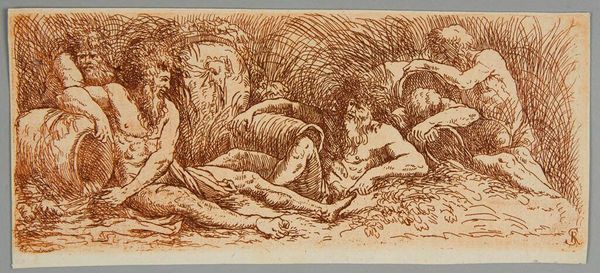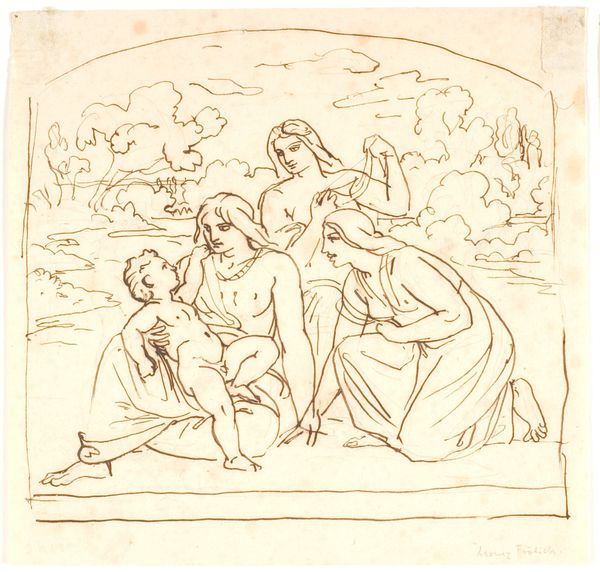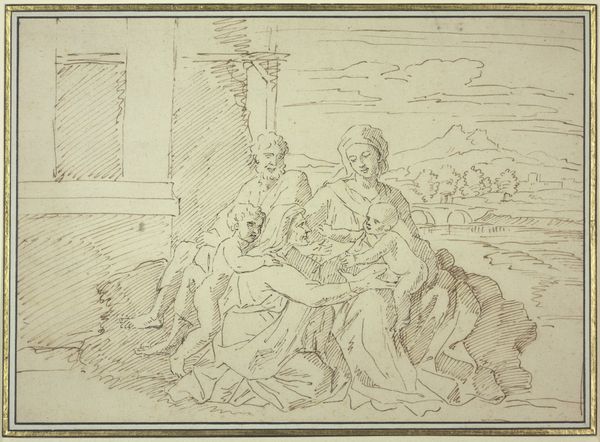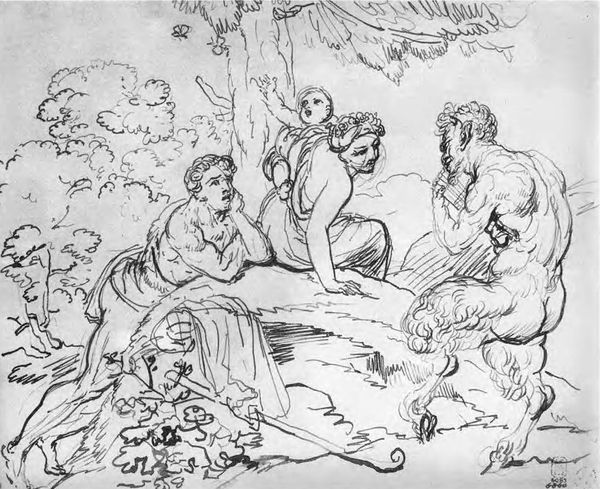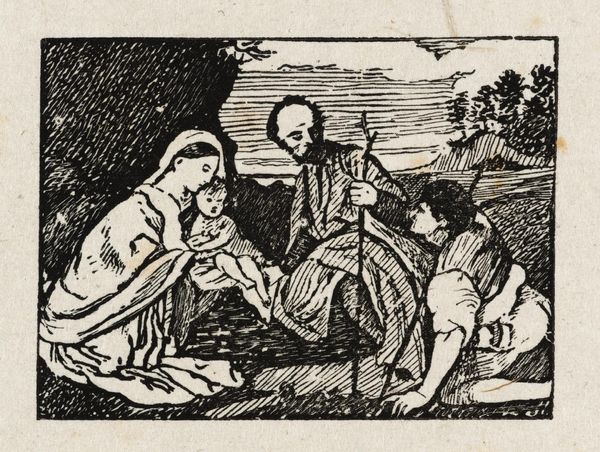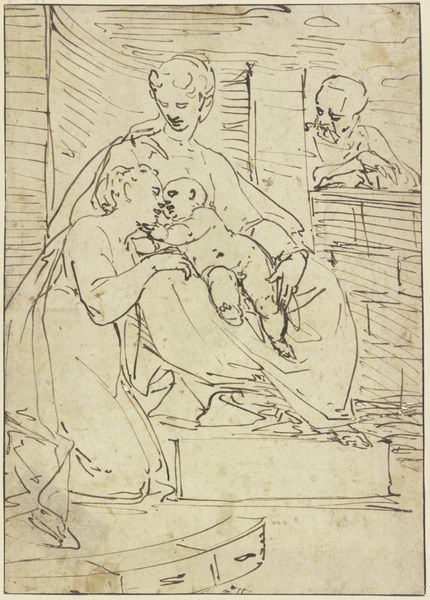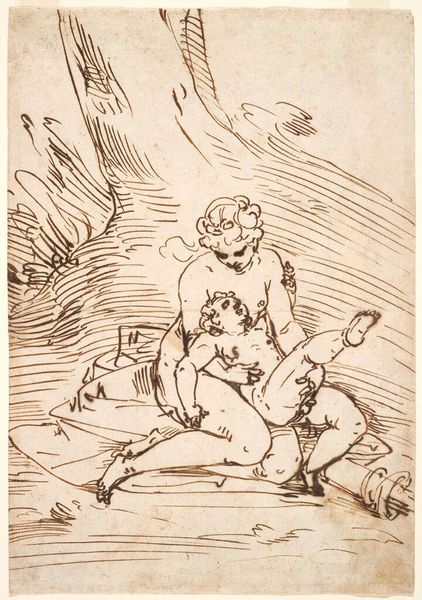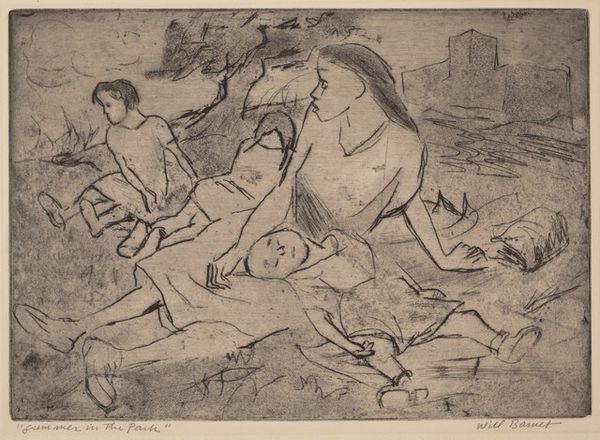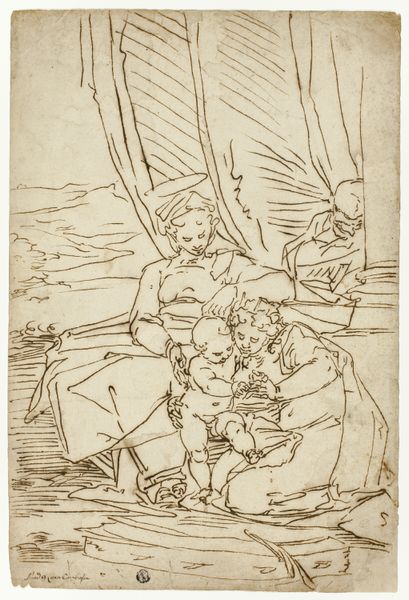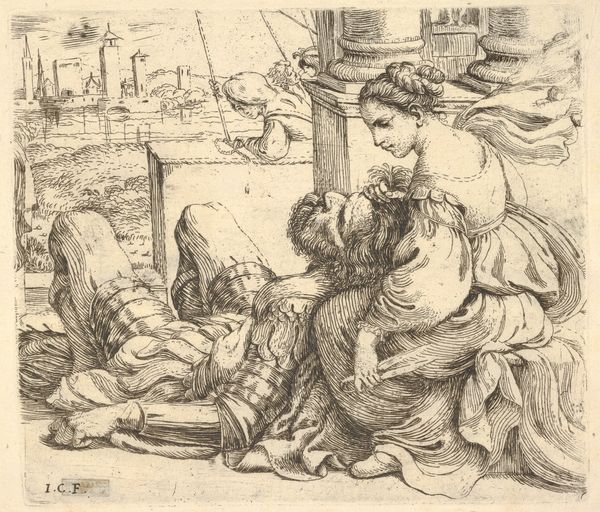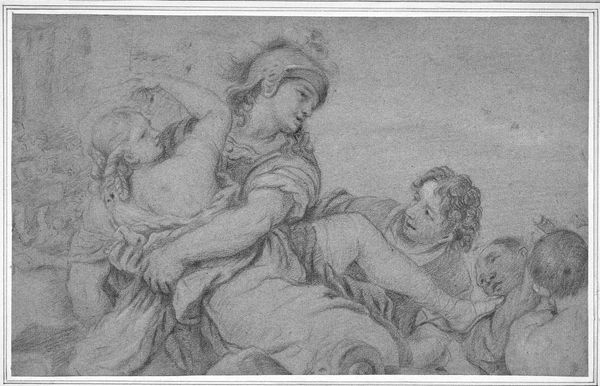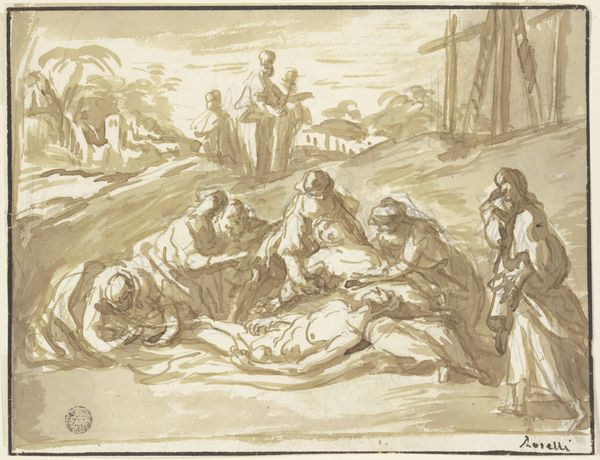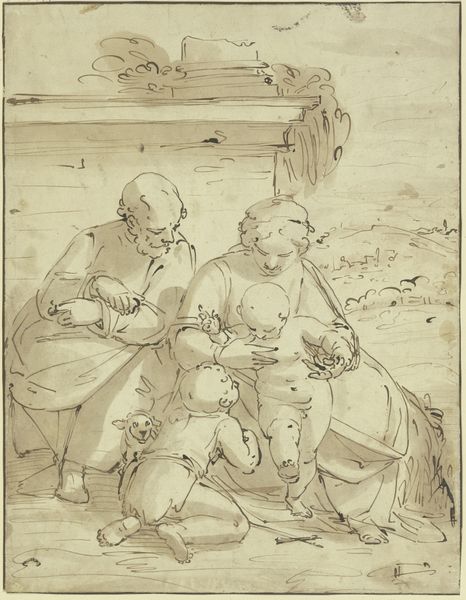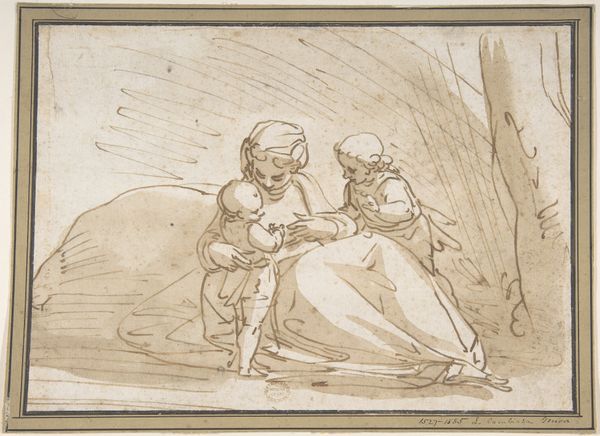
drawing, ink, pen
#
drawing
#
ink drawing
#
narrative-art
#
baroque
#
ink painting
#
figuration
#
ink
#
line
#
pen
#
history-painting
Copyright: Public domain
Curator: Welcome. Before us, we have a drawing titled "Samson and Delilah," attributed to Luca Giordano, rendered in ink. You can find it housed here at the Fine Arts Museums of San Francisco. Editor: It's arresting! I am immediately drawn to the raw emotion in these lines. There’s a kind of tense stillness, like the air before a storm, even in this small pen drawing. Curator: Indeed. Giordano, working firmly within the Baroque tradition, masterfully captures a pivotal scene. The drama of betrayal, deeply rooted in its social context, and in the gendered power dynamics. The subject, of course, is a story known widely from the Hebrew Bible. Delilah here orchestrates the cutting of Samson’s hair, the source of his superhuman strength. Editor: Right, we see him collapsed, vulnerable. It's interesting to consider this scene in light of current discourse on masculinity. The act feels so emasculating, so deliberate. Delilah, positioned above him, embodies the dangerous woman trope, leveraging sexuality and societal expectations to achieve her goals. But, more generally, she does what she must for her own survival. Curator: The composition certainly highlights these tensions. Giordano, throughout his career, catered to royal and noble patronage; hence, one can look at Delilah's prominence within court culture where influential women operated through intermediaries and were not publicly visible, and in Giordano's oeuvre generally as a reflection of this dynamic. The use of ink creates sharp contrast, heightening the drama but is so interesting it has endured. It makes a lasting statement on societal anxiety surrounding strength, loyalty, and power relations. Editor: Looking at the drawing, the loose, almost frenetic line work does a remarkable job conveying inner turmoil. It’s not just about illustrating a historical moment, it's more, it seems to get into psychological realities, no? Samson's vulnerable posture is profoundly telling and his head resting in her lap suggests complete, almost childlike dependence. I find myself wondering about the ways in which those intersections of love, trust, betrayal continue to repeat throughout history. Curator: A key function of such artworks during the Baroque era. These were instruments of power in moralistic lessons. A crucial part of engaging with such narrative art today is unpacking and engaging with those historic notions of morality and questioning how these interpretations are continuously adapted. Editor: It leaves us contemplating the complex interplay of gender, power, and the very human cost of conflict. Curator: A truly captivating drawing that sparks vital questions.
Comments
No comments
Be the first to comment and join the conversation on the ultimate creative platform.
